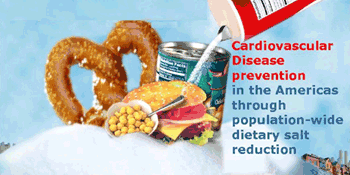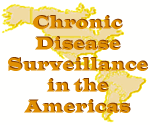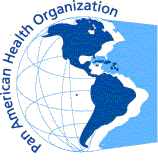0 CHRONIC DISEASE PREVENTION & CONTROL IN THE AMERICAS
PEDIATRIC RHEUMATOLOGY CHRONIC PAIN HOW TO DEAL WITHPEMBROKE ROTARY CLUB CHRONICLE VOLUME 29 NUMBER 25
PEMBROKE ROTARY CLUB CHRONICLE VOLUME 30 NUMBER 14
0 CHRONIC DISEASE PREVENTION & CONTROL IN THE AMERICAS
0611CHRONIC MYELOID LEUKEMIAFINALDOC CHRONIC MYELOID LEUKEMIA MONITORING THE HAYSTACK
176sudoc Improving Patients Medication Adherence in Chronic Deseases Čulig
Chronic Disease Prevention & Control in the Americas
|
Chronic Disease Prevention & Control in the Americas
Monthly Newsletter of the PAHO/WHO Chronic Disease Program Pan American Health Organization Regional Office of the World Health Organization Vol. 3, No. 9–12, September–December 2009
|
Spotlight
P AHO/WHO
Launches Partners’ Forum to Promote Healthy Lifestyles, Reduce
Chronic Disease
AHO/WHO
Launches Partners’ Forum to Promote Healthy Lifestyles, Reduce
Chronic Disease
Contents
Spotlight:
PAHO Launches Partners’ Forum to Promote Healthy Lifestyles,
Reduce Chronic Disease 1
US-Mexico
Border Forum 2
Announcements
& Events 3
New
PAHO CNCD Websites 3
CVDs
and Salt Reduction 3
CNCD
Surveillance 3
CARMEN
Meeting: Documentation Online 4
World
Diabetes Day 4
World
Heart Day 4
Course
on Evidence-Based Public Health 5
News
Roundup 5
Leaders
from the private sector, NGOs, international organizations, and
civil society combine talents and perspectives to help make the
healthy choice the easy choice for consumers
Representatives of major private sector companies, nongovernmental organizations (NGOs), international agencies, and civil society organizations gathered at PAHO Headquarters on 3 December 2009 on to launch a public-private partnership whose goal is to reduce the burden and cost of chronic diseases in the Americas by working together to promote healthier lifestyles and preventive health care.
The new Partners' Forum for Action on Chronic Diseases—a partnership initiated by PAHO/WHO, in consultation with the International Business Leaders Forum (IBLF), the World Economic Forum (WEF), and the Pan American Health and Education Foundation (PAHEF)—brings together a range of talents and perspectives to help raise awareness about chronic diseases, advocate for changes in public policy, and expand existing and develop new initiatives aimed at reducing risk factors and improving treatment of chronic diseases.
Dr. Mirta Roses, Director of PAHO/WHO, said the enhanced partnership approach represents a paradigm shift to actively engage other sectors, including a diverse range of other partners. “Our vision is to prevent over 3 million deaths, reduce suffering and the upward cost spiral, and improve productivity through joint action over the next 10 years.”
 Chronic
diseases such as heart disease, cancer, and diabetes are the leading
causes of premature death and illness throughout the Americas. They
account for some 4.5 million deaths each year in Latin America and
the Caribbean, or 77 percent of all deaths in the Region.
Chronic
diseases such as heart disease, cancer, and diabetes are the leading
causes of premature death and illness throughout the Americas. They
account for some 4.5 million deaths each year in Latin America and
the Caribbean, or 77 percent of all deaths in the Region.
Yet chronic diseases are in large part preventable. Experts say that as much as 80 percent of heart disease, stroke, and diabetes and 40 percent of
c ancers
could be prevented by modifying a handful of risk factors, primarily
unhealthy diets, physical inactivity, tobacco use, and the harmful
use of alcohol.
ancers
could be prevented by modifying a handful of risk factors, primarily
unhealthy diets, physical inactivity, tobacco use, and the harmful
use of alcohol.
The Partners’ Forum will seek to mobilize support from people and institutions in different sectors—health, industry, civil society, and the international community—to advocate for and catalyze the necessary changes in public policy, marketing, medical care, and individual behavior that are needed to reduce risk factors and improve preventive treatment for chronic diseases. The Partners’ Forum will also serve as the regional forum of the Global Non Communicable Disease Network (NCDnet) of WHO.
James Hospedales, coordinator of chronic disease prevention for PAHO, said the time is right for an initiative such as the Partners’ Forum.
“We see growing consumer concerns about the quality and costs of health care and lack of access to care for people without health insurance. At the same time, we see growing demands to put people first in policies on transportation, climate change and the environment, trade, and agriculture. All this contributes to a political and social environment that is highly conducive to scaling up efforts to fight chronic diseases.”
A central element of the Forum’s efforts to promote healthy lifestyles will be to “make the health choice the easy choice,” said Hospedales.
“You do this by promoting healthier agro-industrial practices, healthier public policies, and healthier behaviors like biking and walking, using public transportation, and eating locally grown food. By bringing together partners from a wide cross-section of society, we can do this more effectively by working together to raise awareness, support current initiatives, and create new, innovative ones that take a common approach and have a real impact on the chronic disease epidemic.”
Members of the new Partners’ Forum will include representatives of PAHO and the World Health Organization (WHO), Grupo Bimbo, Grocery Manufacturers Association (GMA), the InterAmerican Heart Foundation, Consumers International, Merck & Co. Inc., Pfizer, Sanofi Aventis, GlaxoSmithKline, 5-a-Day, Ciclovías, Kraft Foods, The Coca-Cola Company, PepsiCo, and the CARMEN country network, among others.
Source: PAHO press release.
US-Mexico Border Forum

Border Partners’ Forum for Action: Prevention of Chronic Diseases and Promotion of Healthy Lifestyles
The first meeting of the Border Partners’ Forum for Action was held on 13 October 2009 in El Paso, Texas. Participants included approximately 80 people from politics, academia, foundations, the business and pharmaceutical sectors, civil society, and the mass media.
The new Border Forum brings together interested border organizations and companies from a variety of sectors to develop and carry out actions to prevent and control chronic diseases and promote healthy lifestyles.
The Border Partners’ Forum will play a leadership role in bringing to light good practices in chronic disease prevention and management, healthy lifestyles, and supportive environments, as well as in scaling up their application at all levels.
For more details, see the summary report.
Source: PAHO US-Mexico Border Field Office, El Paso
A nnouncements
nnouncements
N ew
PAHO CNCD Websites
ew
PAHO CNCD Websites
CVDs and Salt Reduction
PAHO’s new website for Cardiovascular Diseases (found under Projects and Programs) will feature an entire library of documentation and resources either already added or to be added over the next month. The new items are focused on dietary salt reduction. Highlights to date include the following:
Policy Statement on Dietary Salt Reduction
R esource
Slides:
Salt,
Hypertension, and Health
(74-slide training presentation)
esource
Slides:
Salt,
Hypertension, and Health
(74-slide training presentation)
Fact Sheets
![]() Fact
Sheet: Cardiovascular Disease in the Americas
Fact
Sheet: Cardiovascular Disease in the Americas
![]() Salt
Reduction Initiative in the Americas: Fact Sheet
Salt
Reduction Initiative in the Americas: Fact Sheet
![]() Reducing
Dietary Salt to Improve Health in the Americas: Fact Sheet for
Healthcare Professionals
Reducing
Dietary Salt to Improve Health in the Americas: Fact Sheet for
Healthcare Professionals
![]() Reducing
Dietary Salt to Improve Health in the Americas: Patient/Consumer
Fact Sheet
Reducing
Dietary Salt to Improve Health in the Americas: Patient/Consumer
Fact Sheet
![]() Reducing
Dietary Salt to Improve Health in the Americas: Policy Fact Sheet
Reducing
Dietary Salt to Improve Health in the Americas: Policy Fact Sheet
Task Force: PAHO Expert Group on Dietary Salt Reduction
Press Releases
PAHO Experts Recommend Lowering Salt Consumption to Save Lives
Health Experts Call on Industry, Consumers to Cut Salt to Save Lives
In an effort to make the site more user-friendly, the navigation bar on the left of the page takes the user to successive subcategories, with much the same look and feel of the WHO website.

CNCD Surveillance
T he
PAHO site for CNCD
Surveillance
has been redesigned in much the same way as for CVDs, with new
materials added. The tabs on the left lead to main sections on
country-level surveillance for CNCDs: the STEPwise approach, the
Global School Health Survey, the global WHO NCD InfoBase,
registries, and events.
he
PAHO site for CNCD
Surveillance
has been redesigned in much the same way as for CVDs, with new
materials added. The tabs on the left lead to main sections on
country-level surveillance for CNCDs: the STEPwise approach, the
Global School Health Survey, the global WHO NCD InfoBase,
registries, and events.
New
items include a page devoted to the Brasilia meeting last October on
improving
cancer information in the Americas
through population-based registries (the second meeting for the
PAHO-IARC collaborative initiative). The online documentation
includes the p resentations
made at the meeting and provides an excellent overview of the
current situation of cancer registries and efforts being made to
improve data quality.
resentations
made at the meeting and provides an excellent overview of the
current situation of cancer registries and efforts being made to
improve data quality.
CARMEN Meeting Documentation Online
T he
CARMEN network of chronic disease program managers and partner
organizations met for its biennial meeting in Lima, Peru,
26–29October 2009. Over 130 participants from 35 countries
participated in this unique event, the majority of participants in
leadership positions and responsible for chronic disease and risk
factor prevention and control programs in their country. See
the website for this year’s CARMEN
meeting
for
access to all meeting documentation, including all presentations.
he
CARMEN network of chronic disease program managers and partner
organizations met for its biennial meeting in Lima, Peru,
26–29October 2009. Over 130 participants from 35 countries
participated in this unique event, the majority of participants in
leadership positions and responsible for chronic disease and risk
factor prevention and control programs in their country. See
the website for this year’s CARMEN
meeting
for
access to all meeting documentation, including all presentations.
W orld
Diabetes Day
orld
Diabetes Day
November 14 of every year is World Diabetes Day. This year's slogan is “Understand diabetes. Take control”:
Know the risks and warning signs.
Know how to respond.
Know how to manage and take control of it.
For more information, see the following multilingual resources:
![]() Official
poster/brochure with recommendations for improving the quality of
diabetes care
| español
| português
Official
poster/brochure with recommendations for improving the quality of
diabetes care
| español
| português

World Heart Day
Every year on September 27, World Heart Day is celebrated. This year’s slogan was “Work with Heart,” promoting workplaces that encourage healthy habits to prevent heart disease and stroke.
PAHO’s official bilingual poster | Main event website (via the World Heart Federation / WHF)

Course on Evidence-Based Public Heath
At
the Del Valle University in Cali, Colombia, at the Center for the
Development and Evaluation of Public Health Policies and
Technologies (Centro
p ara
el Desarrollo y la Evaluación de Políticas y
Tecnología en Salud Pública /
CEDETES,
a PAHO/WHO Collaborating Center), and under the auspices of the
Foundation for Development of Colombian Public Health (Fundación
para el Desarrollo de la Salud Pública Colombiana /
FUNDESALUD),
a two-month long course on Evidence-Based Public Health was held
during the months of August and September, in three phases
(pre-tutorial distance learning, plenary session with physical
participation, and post-tutorial distance learning). This event took
place within the framework of the CARMEN School.
ara
el Desarrollo y la Evaluación de Políticas y
Tecnología en Salud Pública /
CEDETES,
a PAHO/WHO Collaborating Center), and under the auspices of the
Foundation for Development of Colombian Public Health (Fundación
para el Desarrollo de la Salud Pública Colombiana /
FUNDESALUD),
a two-month long course on Evidence-Based Public Health was held
during the months of August and September, in three phases
(pre-tutorial distance learning, plenary session with physical
participation, and post-tutorial distance learning). This event took
place within the framework of the CARMEN School.
General Objective: To provide theoretical and practical bases for evaluating and using available evidence in public health for decision-making related to chronic noncommunicable disease (CNCD) prevention and control, with the purpose of building Regional capacity in this area.
Specific Objectives
Recognize the importance and challenges of public health evaluation and its relevance in decision-making.
Identify key aspects to take into account when articulating evidence for public health decision-making.
Identify available information resources (Internet and others) and their use in obtaining and evaluating evidence of effective public health interventions.
Identify the characteristics and principles of planning evidence-based public health and input for evaluation.
Identify the contribution of strategic planning to establish priorities in public health.
Identify appropriate criteria for prioritizing options for programs and policies.
Understand the general framework and foundation of evaluation of public health economics and applying results.
For more information, see the meeting website, which now includes the final report and the Proposals for Chronic Noncommunicable Disease Prevention and Control (both in Spanish).
 News
Roundup
News
Roundup
News Links in English from September through December (from most recent)
Yes, It’s Safe to Eat Soy if You Have Breast Cancer
High-salt products under increased scrutiny in Canada
PAHO/WHO launches private-public partnership to promote healthy lifestyles, reduce chronic diseases
CDC invests in health prevention for Hispanics in United States., Latin America
Canadians want salt, food makers tell MPs
Jamaica Teams with Neighbours to Improve Diabetic Care
Message from Minister of Health, Hon. Rudyard Spencer for World Diabetes Day ...
Asbestos Accounts for Sixty Percent of Work-Related Deaths in Quebec in 2009
More attention to be paid to chronic diseases, Ramsammy says
Breast cancer: the latest in research
For Obese, Weight Gained in Pregnancy May Not Leave
Ramsammy signals stiffer laws to fight alcohol abuse
Change in approach needed to deal with mental disorders
8.3 Million US Adults Considered Suicide Last Year
Gary Taubes (Good Calories, Bad Calories) to speak at Duke
The Sickness Crisis: America Would Save Over $700 Billion Annually ... (costs of excessive dietary salt)
UWI Chancellor urges higher taxes on cigarettes
Ottawa must act on salt crisis, doctors say
Crisis hotlines, training seen as part of suicide prevention strategy
Study links reducing salt with fewer high blood pressure cases
Belize - Caribbean Wellness Day 2009
Second Breast Cancer: 3 Lifestyle Risks
Women could avoid breast cancer through lifestyle changes
Church’s role to reduce noncommunicable diseases highlighted
Health Workers Wrap-Up Training Aimed at Finalising STEPS Report
Source: PAHO News and Public Information Office.
![]()
![]()

To
subscribe, please write a request to Pilar Fano ([email protected]).
Readers are invited to submit their contributions of 1–3
paragraphs on activities related to chronic disease in the Americas
by sending them to Dr. James Hospedales ([email protected])
with copies to Suzanna Stephens ([email protected])
and Pilar Fano ([email protected]).
Letters to the Editor should be addressed to Silvana Luciani
([email protected]).
Instructions and criteria can be found on the homepage for this
newsletter at the web link below: 
2 CHRONICLES 31210 MALACHI 3712 MATTHEW 2323 2 CORINTHIANS
2 CHRONICLES 34 REPUTABLE RULER CHAPTER SUMMARY BY MATTHEW
302050 CHRONIC ILLNESSES DIABETES DIABETES A DISEASE IN
Tags: americas monthly, the americas, prevention, control, chronic, disease, americas
- REGULATORY IMPACT STATEMENT STREAMLINED PROCESS FOR THE REVIEW OF
- INTRODUÇÃO AO ESTUDO DO SANGUE 1 INTRODUÇÃO O SANGUE
- CÓDIGO DEL PARTICIPANTE CÓDIGO DE TRABAJADOR DE CAMPO CRÓNICAS
- LECTURA 6 AÑOS 80 90 2000…LO QUE PODÍA HABER
- INFLUENZA INFLUENZA VIRUS INTEGRATED DETECTION PLATFORM BACKGROUND A
- BLOCKING BASICS BY FRANK SEAVER WOODWARD ACADEMY BLOCKING –
- REQUEST TO USE CARRYOVER FUNDS AGENCY AND GRANT NUMBER
- 14 LA NOMINA DI SOGGETTI DIVERSI DALLE PERSONE FISICHE
- ĮMONIŲ KURIOMS IŠDUOTOS LICENCIJOS VERSTIS MAŽMENINE PREKYBA ALKOHOLINIAIS GĖRIMAIS
- SOCIAL SAFETY NET IN THAILAND THE ROLE OF GOVERNMENT
- RZESZÓW 20122013 R ZAMAWIAJĄCY WOJSKOWA SPECJALISTYCZNA PRZYCHODNIA LEKARSKA SAMODZIELNY
- REGULAMIN ODPŁATNEGO NABYWANIA URZĄDZEŃ WODOCIĄGOWYCH ILUB KANALIZACYJNYCH PRZEZ ZAKŁAD
- KAJ SO SPECIFIČNE UČNE TEŽAVE PRI MATEMATIKI? IMAJO
- UNIVERSIDAD NACIONAL DE LA PLATA FACULTAD DE PSICOLOGÍA
- QUALITY CARE FOSTER CARE TRAINING (STANDARD) LEARNING OUTCOMES ASSESSMENT
- SIX MONTHLY PROGRESS REPORT TEMPLATE PROJECT CODE PROJECT
- VLADIVOSTOK DECLARATION THE 9TH CONSULTATIVE COMMISSION MEETING OF THE
- 4 12TH INTERNATIONAL ROUNDTABLE ON BUSINESS SURVEY FRAMES HELSINKI
- FTSE AND THE JSE ADVISE THAT THE FOLLOWING ANNOUNCEMENT
- M211 PART III SUBPART II CHAPTER 2 SECTION C
- MELDEBOGEN ABITURPRÜFUNG FÜR NICHTSCHÜLERINNEN UND NICHTSCHÜLER BITTE 2FACH AUSFÜLLEN
- HOW THE ELEPHANT GOT ITS TRUNK 1 WHAT IS
- ¡TODAS LAS CASAS TIENEN UN LABORATORIO DE CIENCIAS Y
- TAREA 31 UNIDAD DIDÁCTICA 3 CORRIENTE ALTERNA ELEMENTOS LINEALES
- PREINSPECTION UNIT CHECKLIST CHECK ALL THESE ITEMS BEFORE TAKING
- 1 AKTIVITA KAŽDÝ INÝ VŠETCI ROVNÍ (MULTIKULTÚRNY
- EL ACERTIJO CUENTAN QUE UN DÍA MUY MUY LEJANO
- SEMILLAS FORESTALES LAS RAZONES PARA INTERESARSE EN LAS
- CFGS “GESTIÓN DE ALOJAMIENTOS TURÍSTICOS” PROGRAMACIÓN DIDÁCTICA DEL MÓDULO
- CÁLCULO DEL RENDIMIENTO PERSONAL Y DE LA DEMANDA ASISTENCIAL
 HINDI UNITS 1 AND 2 2002–2023 UNITS 3 AND
HINDI UNITS 1 AND 2 2002–2023 UNITS 3 ANDKAIROS – EDAD MODERNA EL NACIMIENTO DEL ESTADO MODERNO
 STIPENDIJE OPŠTE INFORMACIJE I USLOVI NJEMAČKA FONDACIJA
STIPENDIJE OPŠTE INFORMACIJE I USLOVI NJEMAČKA FONDACIJA6 TD 14720682 OPINIÓN Nº 0842019DTN SOLICITANTE GESTIÓN &
OSNUTEK NA PODLAGI 3 ČLENA ZAKONA O ZAVODIH (URADNI
 ORDEN SAN1442017 DE 22 DE FEBRERO POR LA QUE
ORDEN SAN1442017 DE 22 DE FEBRERO POR LA QUE 12 T HE AFRICAN FINANCIAL MARKETS INITIATIVE (AFMI) MAPPING
12 T HE AFRICAN FINANCIAL MARKETS INITIATIVE (AFMI) MAPPING VEŽBE 06 – (UVOD U MVC) PRIMER 1
VEŽBE 06 – (UVOD U MVC) PRIMER 1®SLOWTRASICOR CIBA OXPRENOLOL HYDROCHLORIDE INFORMATION FOR PATIENTS WHAT YOU
OCEAN WEB RESOURCES MONTEREY BAY AQUARIUM HTTPWWWMONTEREYBAYAQUARIUMORGLCKIDSPLACE NEWPORT AQUARIUM
 TISZTELT SZÜLŐK! TISZTELT KOLLÉGÁK! ALAPÍTVÁNYUNK AZT A NÉZETET
TISZTELT SZÜLŐK! TISZTELT KOLLÉGÁK! ALAPÍTVÁNYUNK AZT A NÉZETETEL DISPOSITIVO SIGNIFICANTE DE LA CRÍTICA REFLEXIONES SOBRE SU
 PROBLEM RESOLUTION FORM N AME DATE (PRINTTYPE ONLY)
PROBLEM RESOLUTION FORM N AME DATE (PRINTTYPE ONLY)COMMISION ON HUMAN RIGHTS YAN CHRISTIAN WARINUSSY SUBCOMMISION
 ANEXO MEMORIA A DADES DEL SOL·LICITANT DATOS DEL
ANEXO MEMORIA A DADES DEL SOL·LICITANT DATOS DEL ESTUDIOS PREVIOS PARA LA ADQUISICION DE LOTE
ESTUDIOS PREVIOS PARA LA ADQUISICION DE LOTEDATER L’INSTRUMENT DE MUSIQUE PREMIER APPEL À COMMUNICATION SOUMISSIONS
 H CONGRESO DEL ESTADO LIBRE Y SOBERANO DE OAXACA
H CONGRESO DEL ESTADO LIBRE Y SOBERANO DE OAXACAANEJO I SUMARIO DEL PROYECTO BREVE DESCRIPCIÓN
 FACOLTA’ DI GIURISPRUDENZA CONVENZIONE TIROCINIO DI FORMAZIONE ED ORIENTAMENTO
FACOLTA’ DI GIURISPRUDENZA CONVENZIONE TIROCINIO DI FORMAZIONE ED ORIENTAMENTO

 ditor-in-Chief:
ditor-in-Chief:
